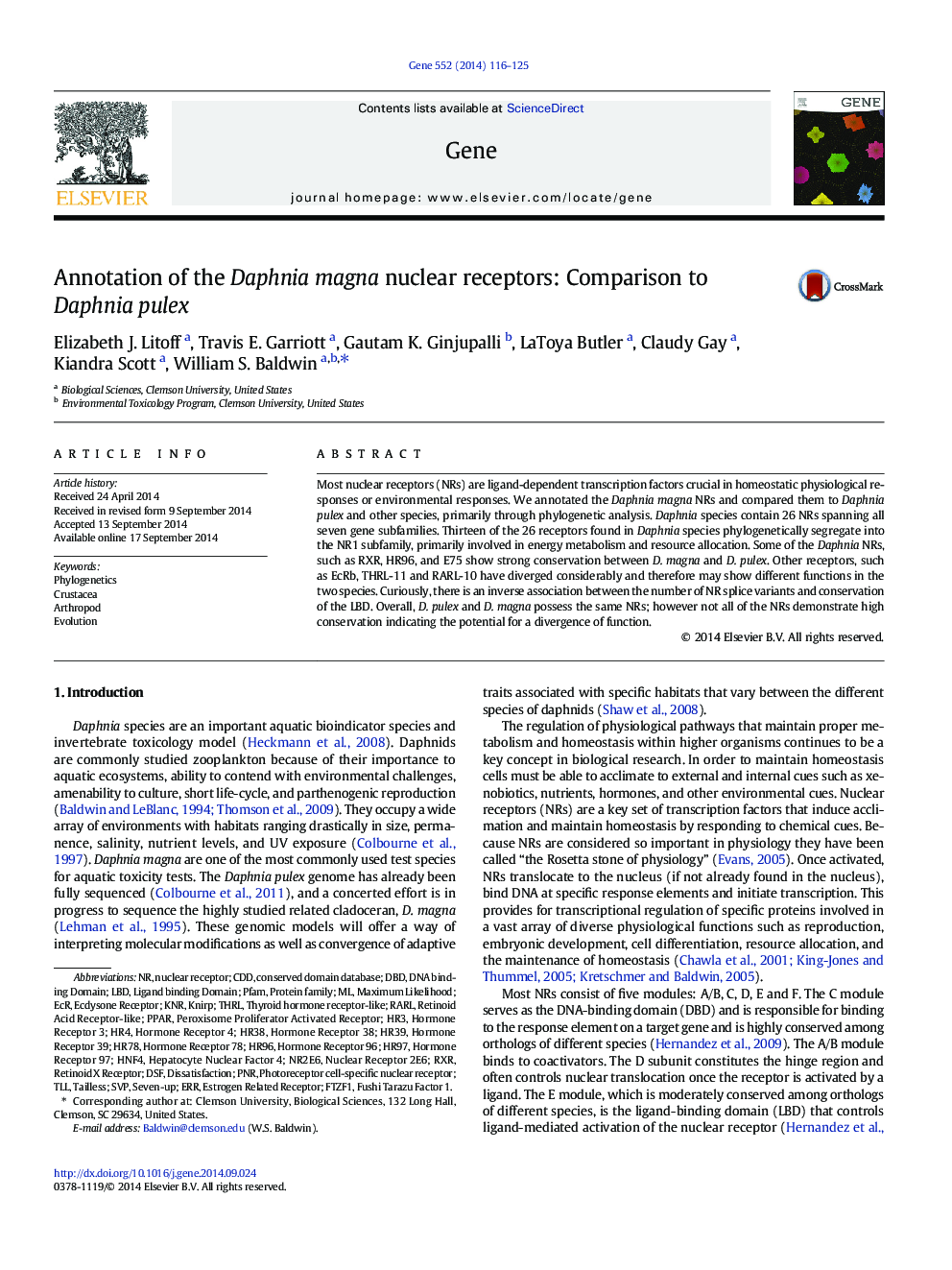| Article ID | Journal | Published Year | Pages | File Type |
|---|---|---|---|---|
| 2816126 | Gene | 2014 | 10 Pages |
•The D. magna NRs were annotated and compared to D. pulex and other species.•D. magna and D. pulex contain 26 NRs spanning each of the seven gene subfamilies.•Thirteen of the 26 receptors phylogenetically fit within the NR1 subfamily.•Several homologous D. magna and D. pulex NRs have nearly identical LBDs or DBDs.•However, about 20% of the homologous NRs show high divergence between the species.
Most nuclear receptors (NRs) are ligand-dependent transcription factors crucial in homeostatic physiological responses or environmental responses. We annotated the Daphnia magna NRs and compared them to Daphnia pulex and other species, primarily through phylogenetic analysis. Daphnia species contain 26 NRs spanning all seven gene subfamilies. Thirteen of the 26 receptors found in Daphnia species phylogenetically segregate into the NR1 subfamily, primarily involved in energy metabolism and resource allocation. Some of the Daphnia NRs, such as RXR, HR96, and E75 show strong conservation between D. magna and D. pulex. Other receptors, such as EcRb, THRL-11 and RARL-10 have diverged considerably and therefore may show different functions in the two species. Curiously, there is an inverse association between the number of NR splice variants and conservation of the LBD. Overall, D. pulex and D. magna possess the same NRs; however not all of the NRs demonstrate high conservation indicating the potential for a divergence of function.
